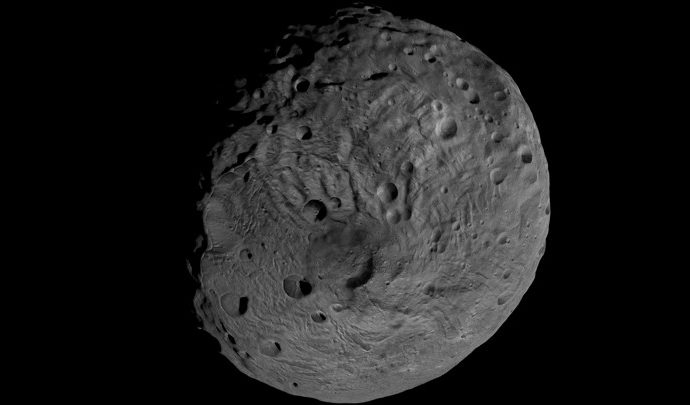The agency just greenlit a robotic mission to the most metal-rich space rock in the solar system.
Seven years from now, we’ll find out for sure. Earlier this week, NASA chose to fund an eponymous robotic mission to Psyche, scheduled to launch in 2023. The mission marks the first time spacecraft will visit a metallic asteroid, an extremely rare object in the solar system. Similar NASA missions have only visited rocky and icy worlds, like planets and other asteroids, like Vesta and Ceres. Scientists believe Psyche could have grown to be the size of Mars, but its rocky outer layers were smashed away by a series of collisions billions of years ago. What remains, a world made of metallic nickel and iron, is about the size of Massachusetts.
“By visiting Psyche, we can literally visit a planetary core the only way that humankind ever can,” Lindy Elkins-Tanton, the Psyche mission’s lead investigator, told reporters Wednesday. “It’s 1,800 miles to the Earth’s core, and the deepest humans have ever managed to drill is seven-and-a-half miles.”
The Psyche mission is part of NASA’s Discovery program, which funds robotic spacecraft usually focused on a specific slice of science. The missions are capped at $450 million, making them pretty inexpensive, as far as solar system trips go. But the payoffs can be big. The Kepler space telescope has discovered hundreds of exoplanets since its launch in 2009; MESSENGER mission put the first spacecraft into Mercury’s orbit in 2011; and Dawn orbited one asteroid in 2011 before zooming over toward another last year, helping scientists understand the formation of rocky and icy bodies.
The Discovery announcement suggests a growing enthusiasm for asteroid research. NASA has also approved funding for the Lucy mission, which will launch in 2021 to explore the Trojan asteroids, so called because they’re named after figures in the mythical war, that share the orbit Jupiter takes around the sun.
The choices add to a potentially asteroid-heavy news cycle for the 2020s. NASA this week announced it would fund for another year the Near Earth Object Camera project, which would launch an infrared telescope into space track potentially dangerous asteroids near Earth in 2021. The space agency is also working on the Asteroid Redirect Mission, an ambitious plan to redirect an asteroid into a stable orbit around the moon, where astronauts will visit it and come back with samples in the 2020s. But this mission is perhaps the unluckiest of them all. The project is costing NASA more than $1 billion, and has found little to tepid support within the scientific and lawmaking community—and the next administration.
Looking beyond the 2020s, NASA’s asteroid kick is especially exciting for supporters of asteroid mining. The development of such technology is still very much in its infancy, but it’s underway. Planetary Resources, a six-year-old startup based in Washington State, has been collecting investors for an asteroid-hunting satellite, with plans to someday mine the objects. Last summer, the government of Luxembourg announced it would create a fund of more than $227 million for investment in asteroid-mining companies. Planetary Resources received nearly $27 million of that in November.
Little is known about the composition and other properties of the Trojan asteroids near Jupiter. But the resources on metal-rich Psyche could be worth billions or even trillions of dollars—once humans finish developing the technology to mine them, of course.
Source: The Atlantic

































Leave a Comment
You must be logged in to post a comment.